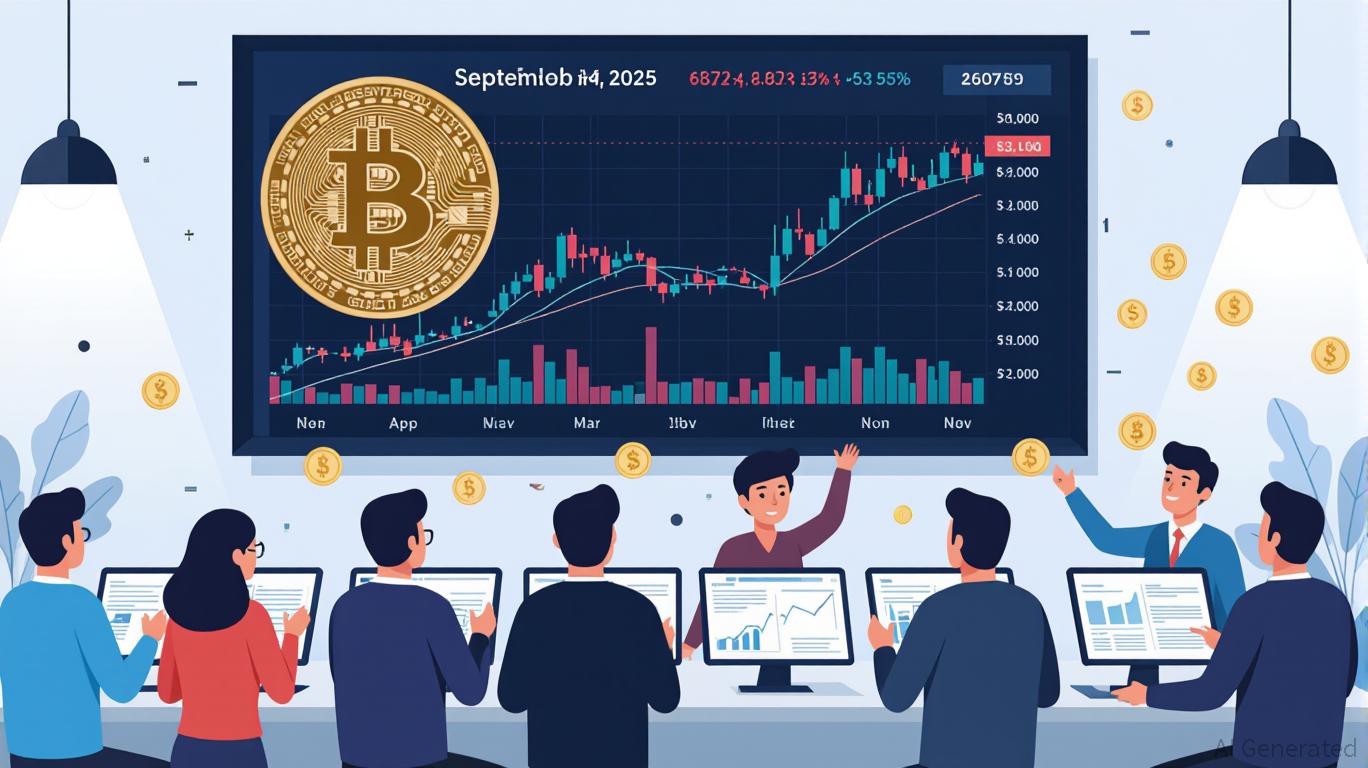Brazil's Approach to Crypto Regulation: Combating Crime and Enhancing Investor Confidence
- Brazil's Central Bank (BCB) introduced strict crypto regulations requiring VASPs to obtain authorization by Feb 2026, with non-compliant firms facing closure by Nov 2026. - Stablecoin transactions are reclassified as FX operations under new rules, subject to transparency requirements and a $100,000 cap on unapproved cross-border transactions. - The framework mandates robust AML controls, cybersecurity, and compliance frameworks for VASPs, aiming to curb fraud and position Brazil as Latin America's crypto
Brazil Implements Extensive Crypto Regulations to Oversee Digital Asset Industry
The Central Bank of Brazil (BCB) has introduced a far-reaching set of rules designed to place cryptocurrency companies and stablecoin activities under tight regulatory supervision, representing a significant move to bring the country’s digital asset market in line with conventional banking practices. Starting February 2026, all virtual asset service providers (VASPs)—such as exchanges, custodians, and brokers—must obtain approval from the central bank to operate. Firms that fail to comply will be forced to shut down by November 2026,
A key aspect of the legislation is the reclassification of stablecoin transactions as foreign exchange (FX) operations, making them subject to the same transparency and regulatory standards as traditional currency exchanges,

The new framework also sets a $100,000 ceiling on transactions with unregistered parties, including international payments and transfers,
To comply, VASPs must implement strong governance, cybersecurity, and risk management systems similar to those required of traditional banks,
Brazil’s digital asset industry has grown rapidly, with $318.8 billion in transactions recorded between July 2024 and June 2025—accounting for nearly a third of all crypto activity in Latin America,
The BCB’s regulatory strategy follows international trends, as countries like the U.S., EU, Singapore, and UAE also work to integrate stablecoins into their financial systems,
Although these rules may increase compliance costs for smaller operators, regulators are confident that the measures will create a safer and more transparent environment for digital assets,
Disclaimer: The content of this article solely reflects the author's opinion and does not represent the platform in any capacity. This article is not intended to serve as a reference for making investment decisions.
You may also like
Trump’s Wall Street Fundraiser Sparks Renewed Debate Over Deregulation and Regulatory Oversight Following Trade Finance Crisis
- Trump dined with Wall Street leaders amid First Brands' $3B trade finance collapse, exposing non-bank lending risks and triggering calls for stricter oversight. - Jefferies faces scrutiny over $3B in tied debt as its stock fell 19%, while JPMorgan's Dimon warned of systemic gaps in non-bank lending oversight. - Trump's 50-year mortgage proposal sparked debate, with critics fearing "debt for life," while a 42-day government shutdown worsened market uncertainty. - The administration's deregulatory agenda c
Digital Identity, No Data Required: ZK Protocol Secures $9M to Champion a Privacy-Centric Tomorrow
- Self Labs raised $9M in seed funding led by Greenfield Capital and SoftBank, with participation from Web3 leaders like Sreeram Kannan and Sandeep Nailwal. - The ZK-based platform enables privacy-preserving identity verification using zero-knowledge proofs and supports 129 countries' biometric passports and India's Aadhaar system. - A points-based rewards program incentivizes on-chain verification, while integrations with Google, Aave , and Velodrome expand use cases like token distribution and age checks

Bitcoin’s Sharp Decline: Is This a Healthy Correction or an Ominous Signal?
- Bitcoin fell 10.5% in November 2025 amid a $19B derivatives crash, driven by Fed policy uncertainty and U.S.-China trade tensions. - Regulatory shifts and leveraged liquidations (1.6M traders impacted) exposed vulnerabilities in crypto's derivatives-heavy market structure. - Institutional demand persisted (e.g., JPMorgan's 64% ETF stake increase), suggesting long-term adoption despite short-term volatility. - Derivatives recovery may lag until 2026, hinging on Fed rate clarity and inflation trends, with

Bitcoin Leverage Liquidation Spike: Systemic Threats in Crypto Derivatives During Q4 2025 Market Turbulence
- Q4 2025 crypto derivatives saw $20B in liquidations as Bitcoin fell below $100,000, exposing systemic risks from extreme leverage (up to 1,001:1) and interconnected markets. - Platforms like Hyperliquid and Binance faced $500M+ losses in 24 hours due to cascading margin calls, with 78% of perpetual futures volume amplifying volatility through feedback loops. - Regulators scramble to address risks as unregulated leverage, macroeconomic pressures, and geopolitical tensions (e.g., U.S.-China trade wars) inc
